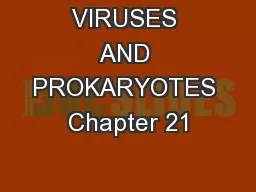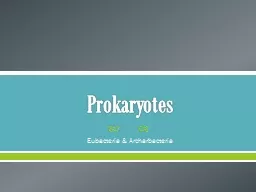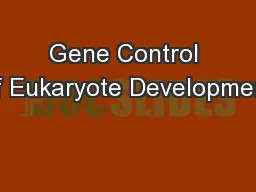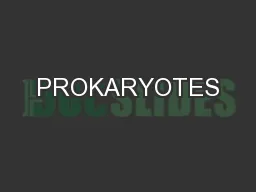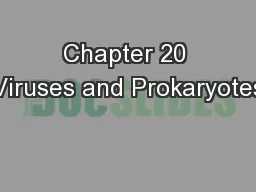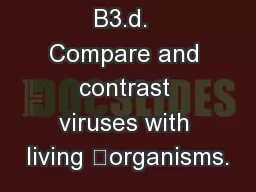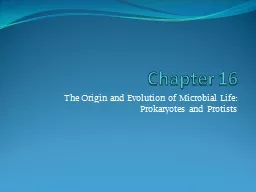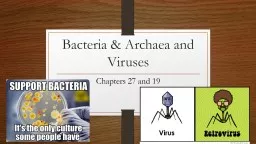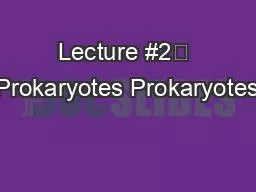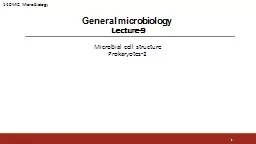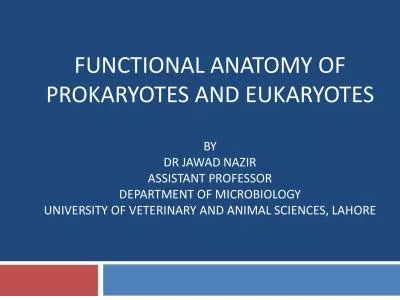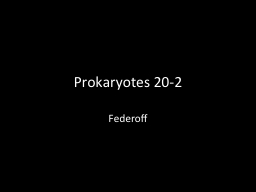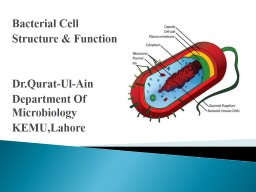PPT-VIRUSES AND PROKARYOTES Chapter 21
Author : liane-varnes | Published Date : 2018-03-15
214 ProkaryotesEnduring Abundant and Diverse Prokaryotes Structurally simple cells that lack a nucleus Evolved before eukaryotes Abundance and Metabolic Diversity
Presentation Embed Code
Download Presentation
Download Presentation The PPT/PDF document "VIRUSES AND PROKARYOTES Chapter 21" is the property of its rightful owner. Permission is granted to download and print the materials on this website for personal, non-commercial use only, and to display it on your personal computer provided you do not modify the materials and that you retain all copyright notices contained in the materials. By downloading content from our website, you accept the terms of this agreement.
VIRUSES AND PROKARYOTES Chapter 21: Transcript
Download Rules Of Document
"VIRUSES AND PROKARYOTES Chapter 21"The content belongs to its owner. You may download and print it for personal use, without modification, and keep all copyright notices. By downloading, you agree to these terms.
Related Documents

